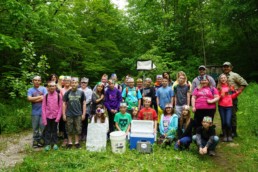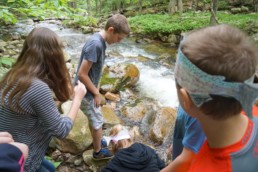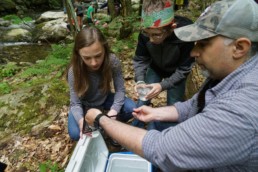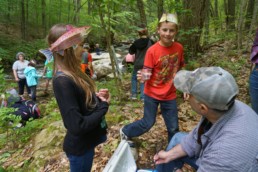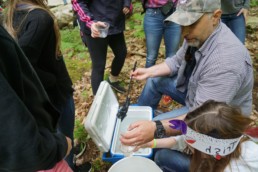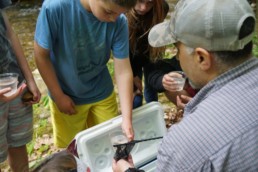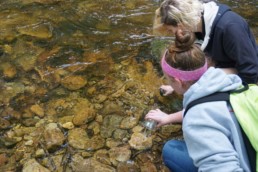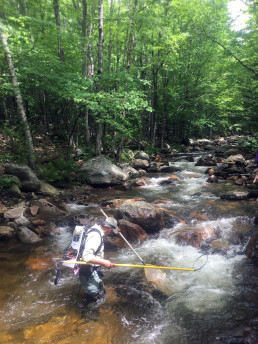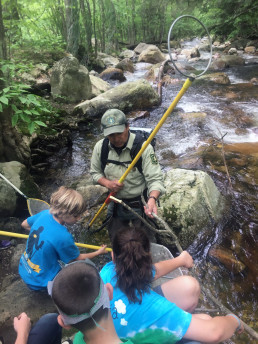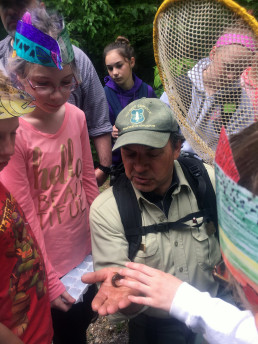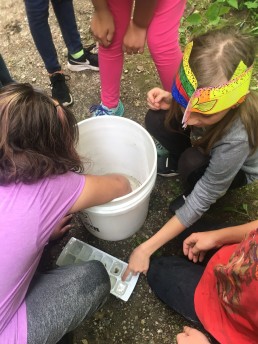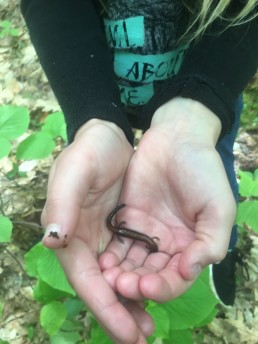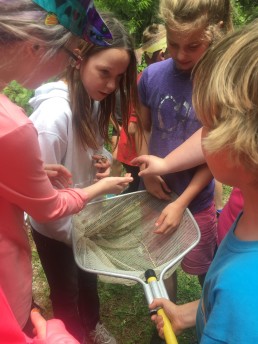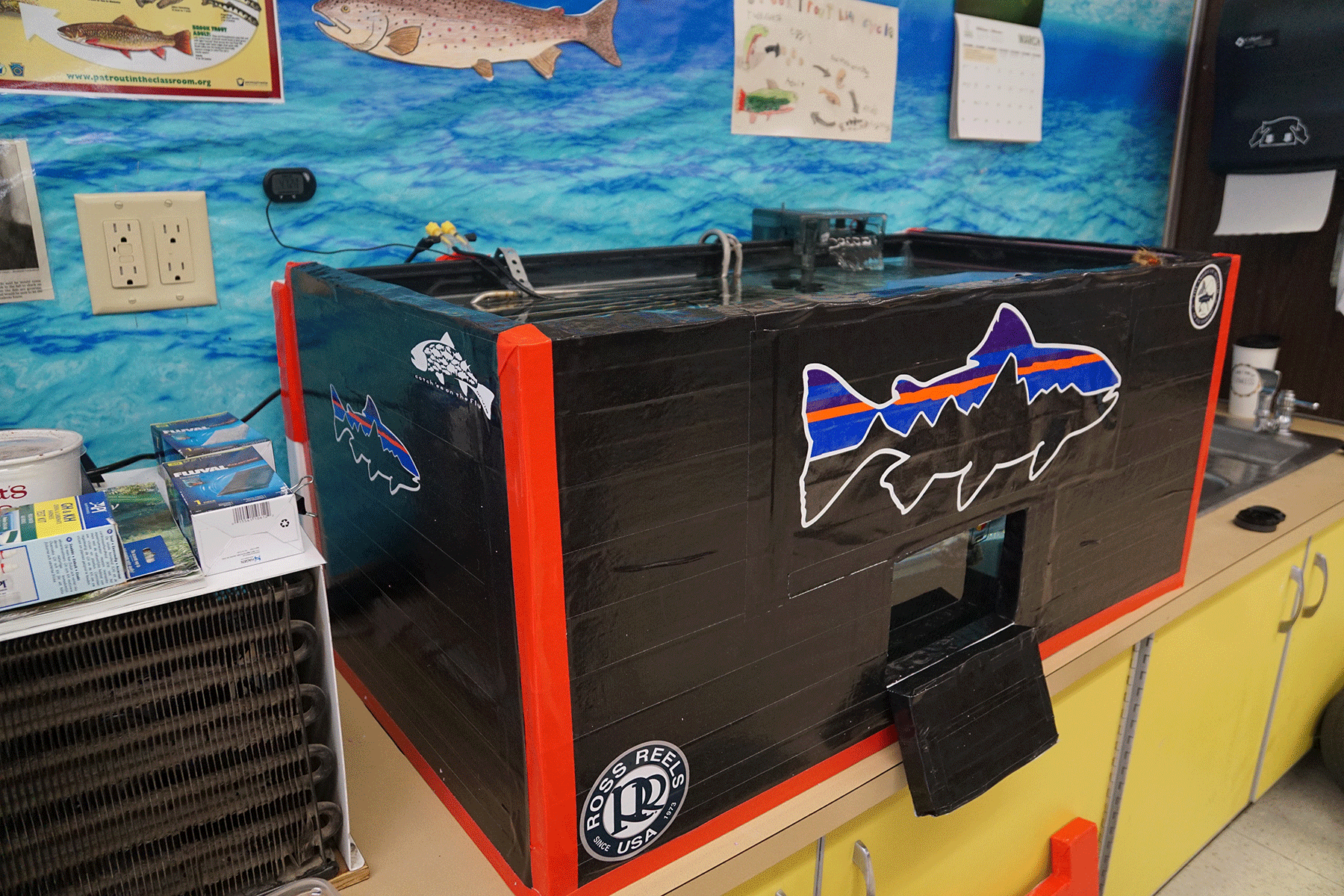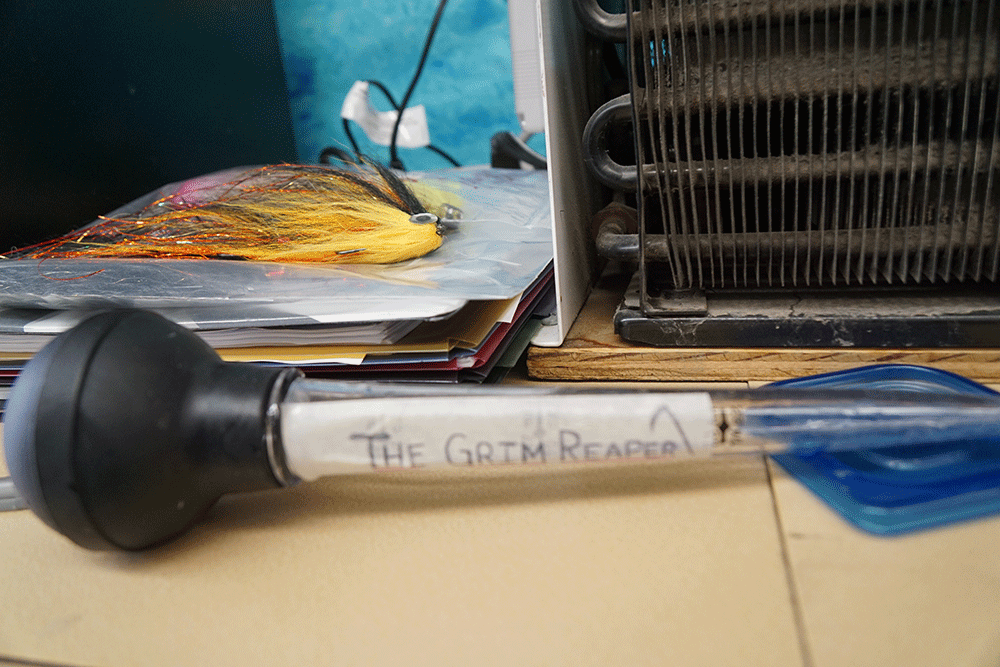I had the great privilege of shadowing Michael Carrano’s class at the Pownal Elementary School for the past couple of months as they participated in Trout Unlimited’s Trout in the Classroom program. Here is what happened on my last two days in school…
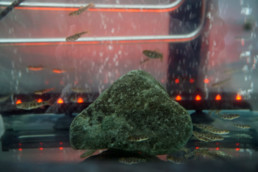
Fish Anatomy 101
Trout in the Classroom provides a wonderful forum to actively engage in a variety of subjects and life skills. Children learn values of teamwork and responsibility in taking care of the fish but it also sets up important curriculums that pertain to science and math. The tank must be tested for ammonia almost every day and teachers can tie the program into lesson plans about animal habitats, river ecosystems, conservation, etymology, and much more.
Naturally, I had to find out for myself so I squeezed into a fifth grader sized desk and listened to Mr Carrano’s lesson on fish anatomy:
Lateral Line
The lateral line detects movement, vibration, and pressure changes in the water.
Nare
Not the hair product from the 1990's
Oper-what?
The operculum protects the trout's gills.
All-seeing Trout
330 degree vision keeps them a step ahead of predators.
Release Day
On Friday, June 9, I made an early morning drive down Route 7 from Manchester to meet the fifth grade students at Pownal Elementary for the final chapter in their Trout in the Classroom experience. As I took an awkward picture for my visitor pass at the check-in desk, I saw children walking around with rainbow trout hats, brown trout hats, and other decoratively adorned piscatorial headwear. The school was buzzing with excitement for Release Day and I hadn’t even made it to the classroom yet.
I strolled over to teacher Michael Carrano’s room where I chatted with him and Chris Alexopoulos, a fisheries and wildlife specialist with the National Forest Service who assists local classes with the Trout in the Classroom program. The two men carefully transplanted the class’ 180 remaining trout into a large cooler and attached an aerator device to keep them alive and happy for the trip to their new home. Once the trout and the children were loaded onto the bus, we took off to a local stream to release the fish.
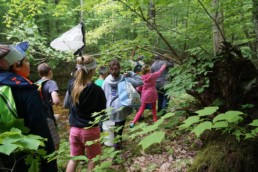
We wasted no time after our arrival, immediately filing off of the bus and making our way to the trailhead. Once we had hiked in halfway to the release point, we stopped and took a group photo before Chris Alexopoulos addressed the students. He applauded the children and Mr. Carrano for their exceptional job in raising the fish and stressed the importance of the class’ work to the National Forest Service’s continuing studies and conservation work on the local rivers. He also explained why he had chosen this spot in particular to release the fish. A stream survey that was conducted by the National Forest Service earlier this year found that there was only a thriving resident brook trout population in the water, without any dace, suckers or other fish that one would normally expect to see. A native strain of trout as such are a more delicate bunch that need particularly clean, cold water and abundant nutrients to thrive, indicating to Mr. Alexopoulos that this was the perfect place to release the students’ fish.
Mr. Carrano then split the class into groups to study the stream. Tiffany Greene from Casting For Recovery and I showed our group of students where the trout would be released and how to locate bugs under streamside rocks while silently salivating at the fishing opportunities that the pocket water stream presented. Once it was time for the trout to be released, everyone took one small plastic cup with water and Mr. Carrano scooped out three trout for each student to release into the wild. Places to release the trout were carefully considered for water flow and protection. Each student found or was directed to a spot where there was soft flowing water near overhanging wood, rocks, or other natural cover so the fish could adjust to their new environment and stay protected from predators.
The trout release worked up an appetite so we broke for a quick lunch before getting back to the hands-on lesson. While the children were eating, Chris Alexopoulos went back to the parking area and readied his equipment to shock the stream. He returned with a device that could only be described as half Ghostbusters backpack and half World War II radio. He took the time to show each student how the equipment functions, clarifying that they do not shock and kill the fish with the device, instead stunning them by stimulating the muscle tissue. He explained to the students that, “Fish are really all muscle, you ask Mr. Carrano when he reels in a 25 inch trout how strong that fish is. That is all muscle on that fish trying to swim away”. Alexopoulos then entered the stream with his gear, leaving a long “rat tail” wire in the water that completes his circuit to the horseshoe shaped loop on the end of a long metal rod. There was an audible electric buzz on the water as he worked the rocks and covered areas in hopes of turning up some fish. The results were incredible, turning up five fish in a great variety of age and size. The largest caught was an eight-inch three-year old trout and the smallest, and most impressive, was a native brook trout fry.
After the electro-shock experiment, Mr. Carrano donned his waders and a five gallon bucket for the final lesson. He collected an assortment of bugs and poured the contents of the bucket into smaller ice cube trays. Yellow stonefly and mayfly nymphs accounted for the majority of the observed insect life, along with other decomposers that feed on the river vegetation. A sculpin even showed up in the mix, speaking to the variety of options on the menu for our trout.
After releasing the bugs back to their riparian habitat, it was time to leave. As we walked back to the bus, Mr. Carrano and I found ourselves talking at the back of the line. He turned and took a long look at the stream one last time and said to me, “I really hope that they get something out of this”.
The kids will be alright.
